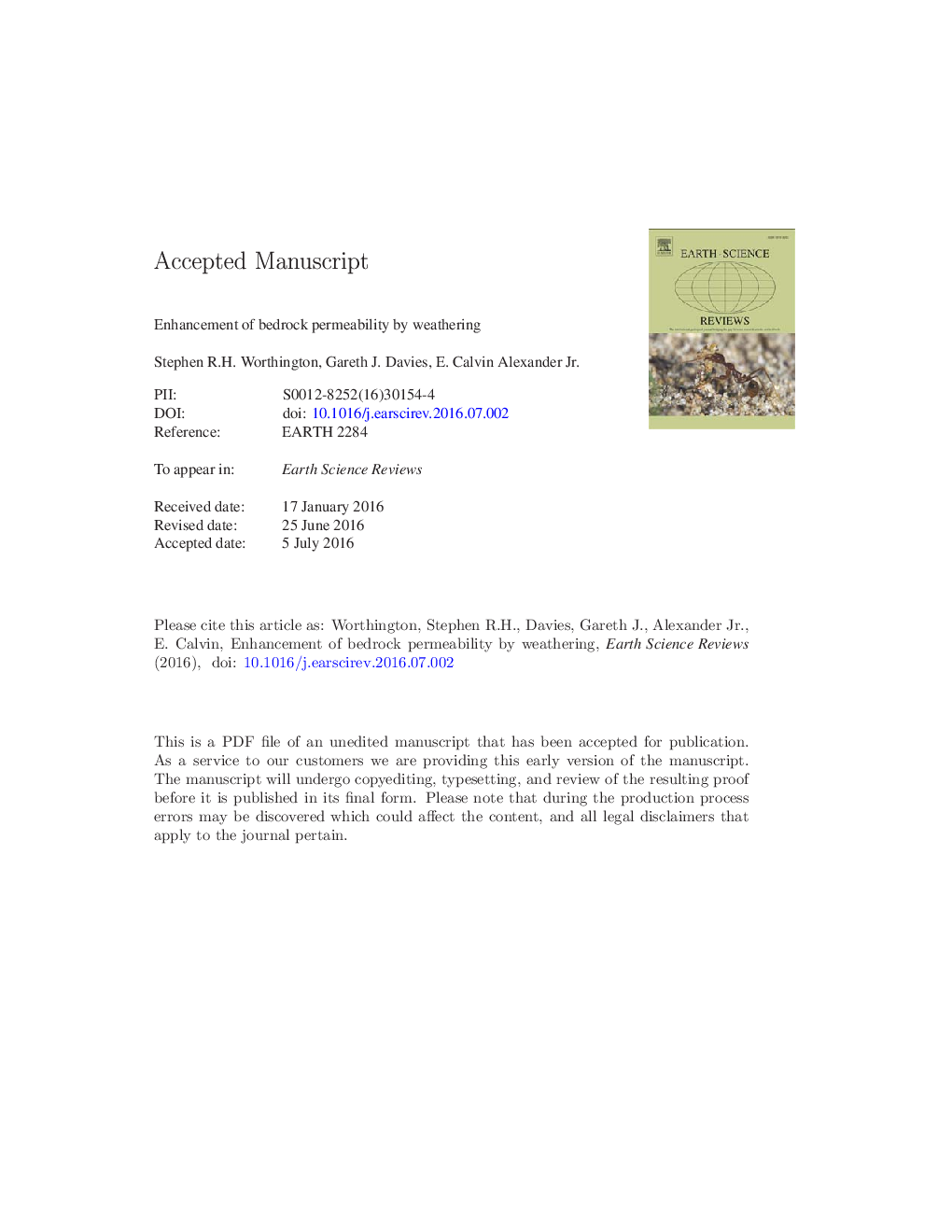| کد مقاله | کد نشریه | سال انتشار | مقاله انگلیسی | نسخه تمام متن |
|---|---|---|---|---|
| 6442809 | 1639942 | 2016 | 73 صفحه PDF | دانلود رایگان |
عنوان انگلیسی مقاله ISI
Enhancement of bedrock permeability by weathering
ترجمه فارسی عنوان
افزایش نفوذپذیری بستر بستگی دارد
دانلود مقاله + سفارش ترجمه
دانلود مقاله ISI انگلیسی
رایگان برای ایرانیان
کلمات کلیدی
نفوذپذیری، آب و هوا، انحلال، خود سازمان، سنگ شناسی، مدل مفهومی،
موضوعات مرتبط
مهندسی و علوم پایه
علوم زمین و سیارات
زمین شناسی
چکیده انگلیسی
The permeability of bedrock aquifers varies by more than four orders of magnitude between different lithologies, but the reasons for this large range remain unexplained. In this review, we examine the role that weathering plays in enhancing the permeability of the five major hydrolithologies, represented by limestone, basalt, granite, sandstone and shale. In limestone aquifers, rapid dissolution kinetics and congruent dissolution result in widespread permeability enhancement. Weathering is usually focused along fractures, and feedbacks between flow and dissolution result in self-organization into networks of channels that discharge at springs. Caves represent prominent examples of weathering. In silicate aquifers, slower dissolution kinetics and incongruent dissolution make it more difficult to predict permeability enhancement. However, positive correlations between permeability and both the solute concentrations and the dissolution rates of the five major lithologies suggest that weathering is a major factor that enhances permeability in silicate as well as in carbonate aquifers. This explains why the largest springs occur in the most permeable lithologies, why groundwater velocities >Â 10Â m/d are common, and why microbial contamination is more common in bedrock aquifers than in unconsolidated sediments. Differences in weathering rates explain why limestone is much more permeable than shale, and why mafic igneous rocks such as basalt have higher permeabilities than felsic igneous rocks such as granite. Weathering appears to play an important role in enhancing permeability in most bedrock aquifers.
ناشر
Database: Elsevier - ScienceDirect (ساینس دایرکت)
Journal: Earth-Science Reviews - Volume 160, September 2016, Pages 188-202
Journal: Earth-Science Reviews - Volume 160, September 2016, Pages 188-202
نویسندگان
Stephen R.H. Worthington, Gareth J. Davies, E. Calvin Jr.,
